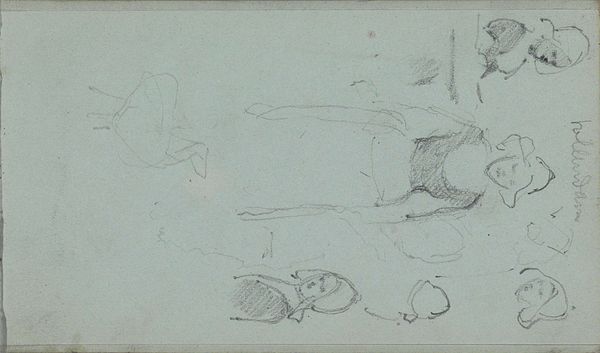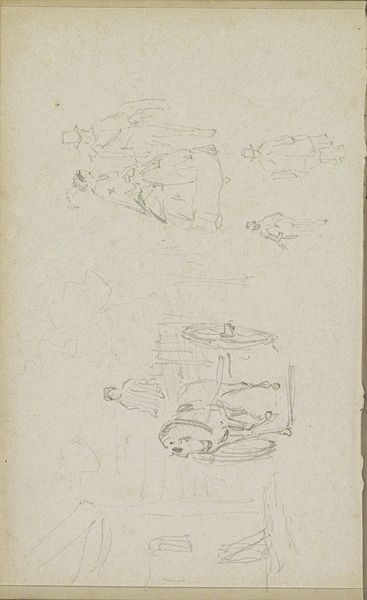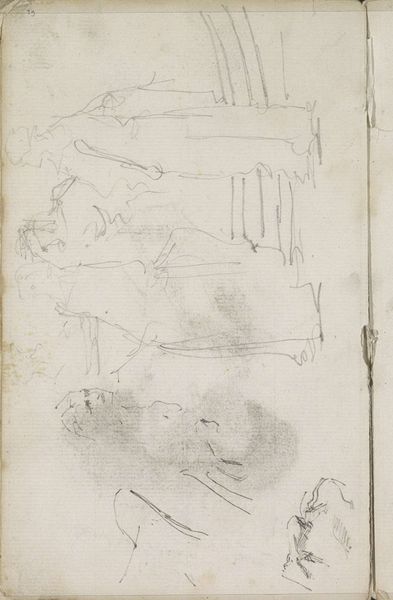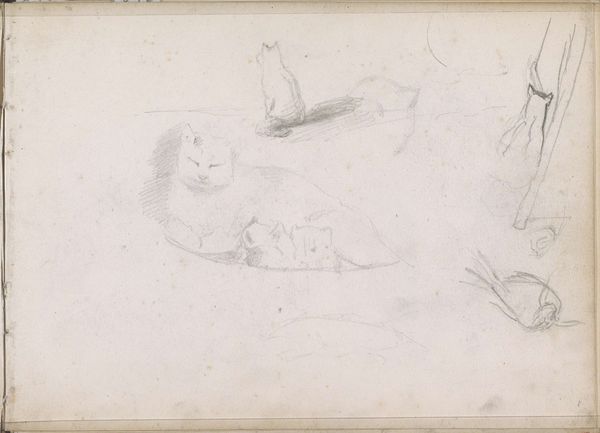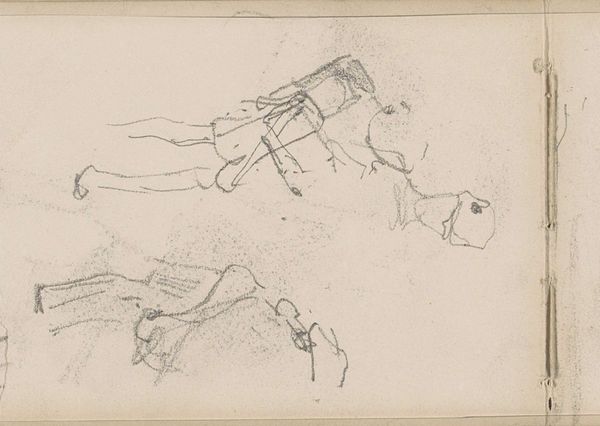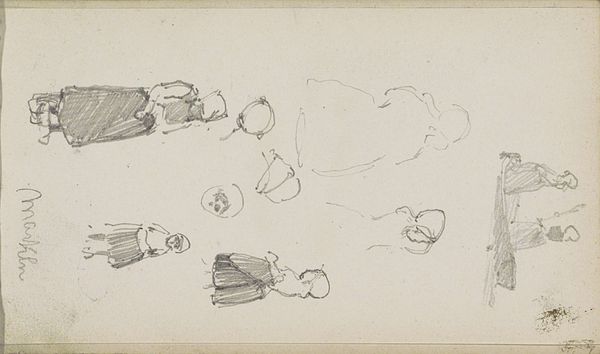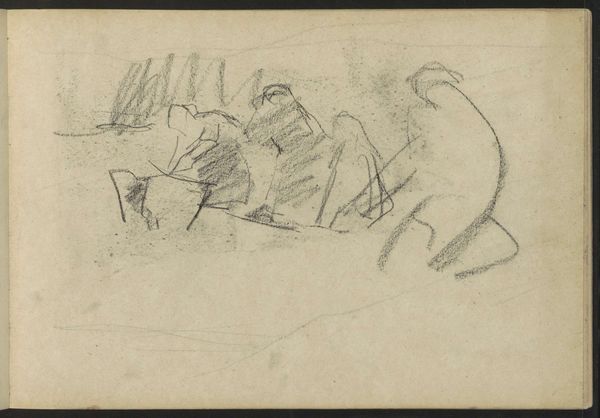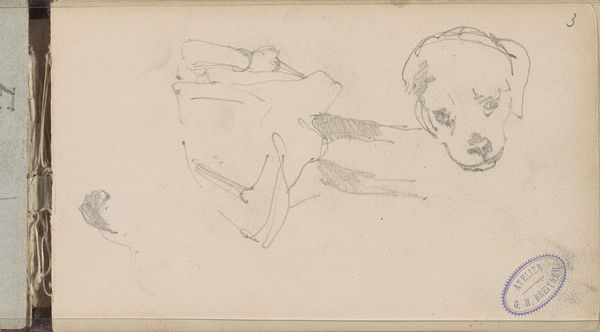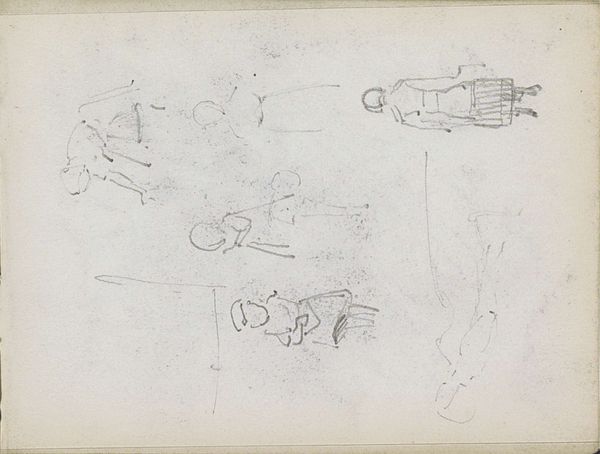
drawing, paper, pencil
#
portrait
#
drawing
#
paper
#
pencil
#
genre-painting
#
realism
Copyright: Rijks Museum: Open Domain
Curator: This drawing by George Clausen, titled "Vrouwen en een meisje uit Marken", dates back to 1875. It's rendered in pencil on paper, showing studies of women and a girl. What strikes you upon seeing it? Editor: The sketchiness of it all—the lightness of the pencil work against the paper, the way the figures seem to almost float on the surface. It evokes a sense of fleeting moments captured, ephemeral and quiet. Curator: Exactly, the sketch acts almost like a social snapshot of Marken. Marken being this isolated island community in the Netherlands. Clausen depicts its women and children, presenting an authentic glimpse into their world, not necessarily meant for public display at the time. Editor: What intrigues me is how Clausen captures the female form and what this tells us about the male gaze and how such realities shape social hierarchy. Does Clausen see these women as subjects of interest, or is he engaging in a more meaningful observation of their day-to-day existence? Curator: That’s a fair challenge. It is critical to acknowledge Clausen was an outsider and therefore occupies a place of authority, but his style also suggests a deep engagement with Realism, a movement deeply interested in accurately representing everyday life, particularly that of the working class and rural populations. So we need to understand how Clausen navigated both the role of artist and documentarian. Editor: But in doing so, doesn’t that almost sanctify a vision imposed by one man? Perhaps instead, shouldn't we prioritize what this image of domesticity suppresses: the invisible work of women and how it’s framed against socio-political landscapes? Curator: It is equally true that art cannot ignore these elements that permeate women’s labor. This pencil drawing exists now, not then, to ask of us a broader awareness of not only the role of labor, but to view its subjectivities with open minds, not restricted to simply its production or political implications. Editor: An interesting dance indeed. It brings into question how much of our reading today reshapes, and how much restores what existed then. Curator: It forces us to be accountable. As viewers, we share responsibility in our interpretation, not just how we consume it, but how it consumes us as well.
Comments
No comments
Be the first to comment and join the conversation on the ultimate creative platform.
